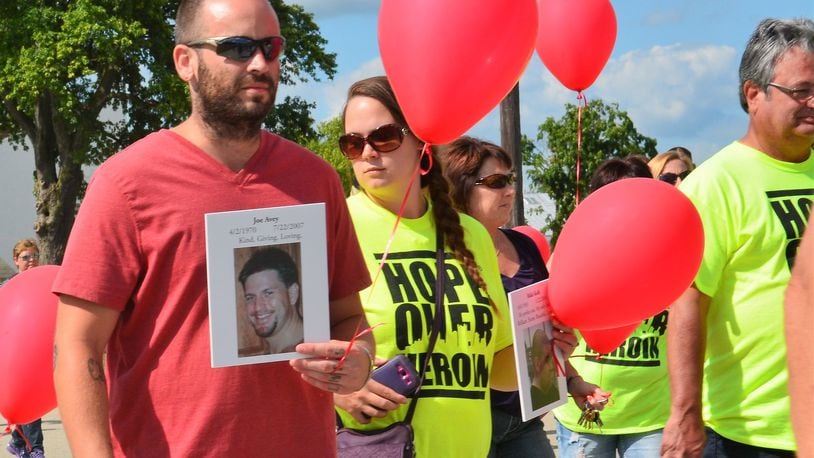Miami County in 2017 experienced a record number of overdose deaths with most occurring in the first half of the year. There were 31 confirmed overdose deaths along with two suspected, according to the annual report issued by county Corner Dr. William Ginn. The previous record was 20 deaths in 2016.
The number of reported overdoses declined during the year and into early 2018 from an average of nearly 100 per month early on to 54 this January and 32 in February, Justice said.
Justice said the opioid problem is not a gender issue, is seen most in those 25 to 50 and is not a race issue.
“It is an equal opportunity destroyer of people,” he said.
Since the coalition started, several measures have been taken, including officers carrying Narcan to revive those overdosing on opioids, response teams that visit those who have overdosed offering to provide help, distribution of information on available resources and addition of treatment options. The faith community also has become involved, organizing two Hope Over Heroin events in 2016 and 2017 at the county fairgrounds and in Piqua.
Among treatment options is ambulatory detoxification through the Recovery and Wellness organization and the Hope House detoxification facility operated by the Miami County Recovery Council first for men and now also for women.
Although numbers have declined, Thom Grim, executive director of the Recovery Council, said “far too many local overdoses” from opioids along with the increase in methamphetamine use are being seen by first responders and caregivers.
The recovery council is seeing and hearing of more cases of methamphetamine abuse.
“Though these do not typically result in an overdose event, it is not a substance anyone is pleased to see being abused,” Grim said, adding law enforcement is seeing more of those people than treatment providers.
During the first year, the Hope House admitted 47 men with 27 graduates and 16 women with six graduates.
“We continue to need financial support for this program due to the high cost associated with staffing and operating a 24/7 facility,” Grim said.
For more information on the Hope House and MCRC, visit www.mcrcinc.org.
About the Author
